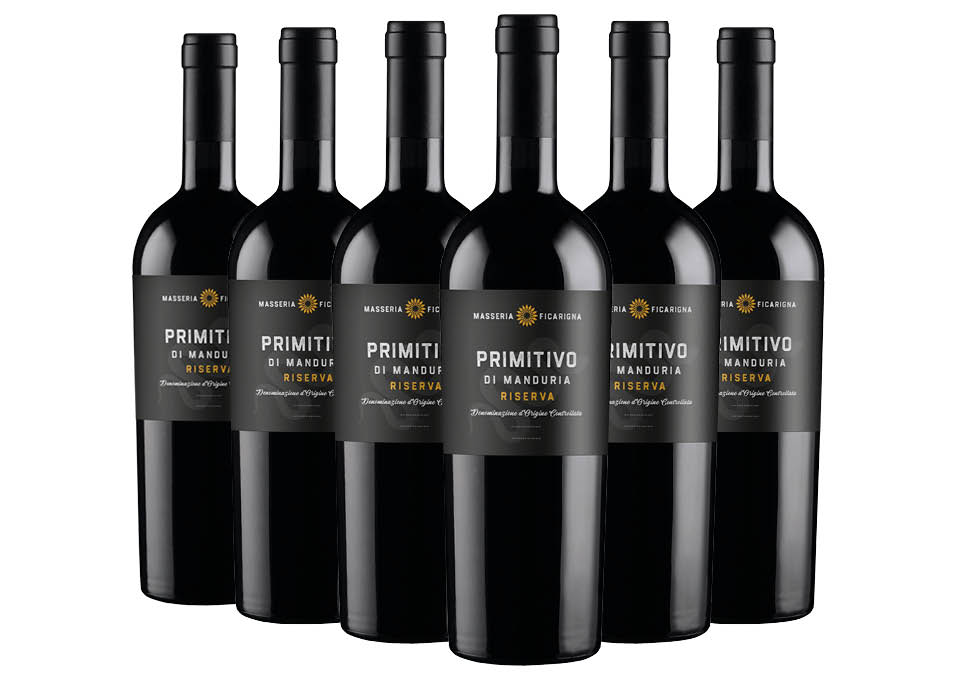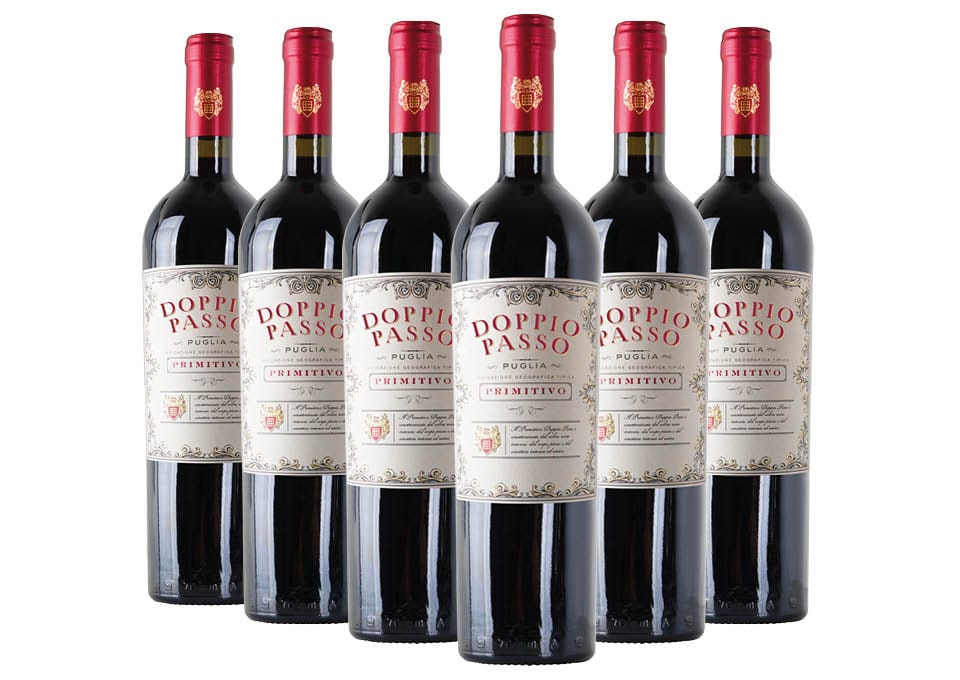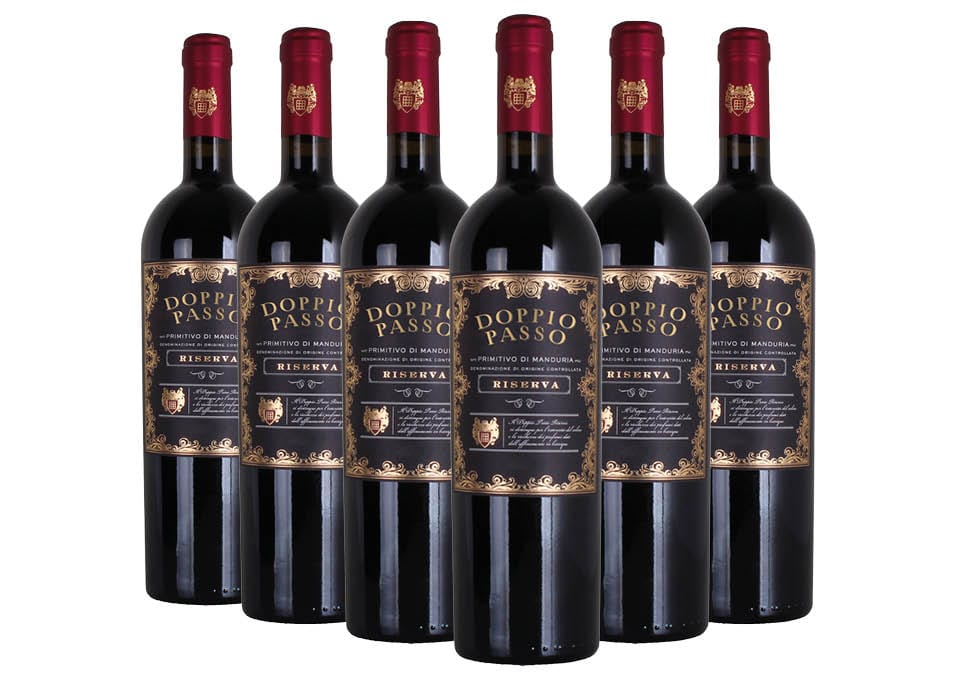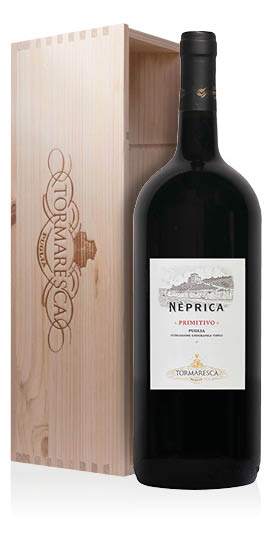Primitivo
Primitivo is a black grape variety widespread above all in southern Italy, where it finds the ideal conditions to thrive. It seems that the name of Primitivo derives from the term Primativus used in ancient times to indicate the premature ripening of grapes certified in the Apulian area. The probable arrival in Apulia thanks to the Illyrian people makes it a historically very dated vine. Showing a compact cluster, Primitivo shows great sensitivity to humidity and that is why its diffusion in ventilated areas can help its correct growth without the risk of mould. Highly productive, Primitivo is widespread in the Salento areas, in the provinces of Lecce and Taranto. Also interesting is the genetic similarity of Primitivo with the Zinfandel widespread in California which gives particularly soft and enveloping wines. Only for a few decades, given the great ability to develop a recognizable aromatic complexity, Primitivo is not only used as a blending grape but vinified in purity and in compliance with the best cellar practices. Widespread with more than 12,000 ht between the regions of Apulia, Abruzzo, Campania and Basilicata, Primitivo appears as a grape of some important appellations such as: Primitivo di Manduria, Salento, Apulia, Salento del Massico, Gioia del Colle, Gravina. Intense ruby red colour, tends to garnet with aging. The nose is dominated by red and black fruit, such as blueberries, black cherry, plum, while the ability to age in wood leads the wine to develop spicy aromas of pepper and licorice, complementing it with aromas of cocoa and tobacco dust. Soft in the tannic contribution, it is a full and enveloping wine, capable of guaranteeing great persistence. Some refined versions can also be considered meditation.
Primitivo di Manduria
The spread of Primitivo in the area of Manduria is already attested by Pliny the Elder, despite the entry of this vine into the Italian peninsula can be traced back to the Illyrians who decided to spread it before the Roman era. The discreet trade towards the East of the area's wines was so intense in the Middle Ages that the name 'Brindisi', a city famous for its port, could soon represent, as it will be in modern usage, a wish anticipated by the drinking of good wine. From the Murge area, Primitivo begins to spread in Salento, finding ideal conditions for early ripening: a substantial difference compared to the wines produced in the Gioia del Colle area and consisting of greater body and alcohol content, probably developed for higher temperatures and better conditions for the maturation of the sugars, it was not enough to save Primitivo from its use as a blending wine intended mainly for the French market. Primitivo prefers clayey-calcareous soils and is particularly affected by drought conditions. With a harvest usually carried out at the end of August, the bunches are harvested by hand and the vinification takes place immediately to preserve the integrity of the fruit. Of the 900 ht included in the Primitivo di Manduria appellation, about half are dedicated to the cultivation of the Primitivo grape, while the remainder is dedicated to Negroamaro and Malvasia. The production disciplinary of Primitivo di Manduria DOC provides for a maximum yield of 9 tons per hectare with a yield of grapes not exceeding 70%, the origin of the grapes from company vineyards, the presence of Primitivo for at least 85%. Primitivo di Manduria has an intense ruby red colour and releases aromas of plum and red fruits on the nose that evolve into cocoa, tobacco and oriental spices for a strong body, soft and pleasant tannins, great persistence and roundness.
What are the characteristics of Primitivo?
Primitivo is a grape capable of guaranteeing representative and territorial wines. It lends itself well to the creation of blends, but best expresses its characteristics even when vinified alone. Among the characteristics of Primitivo it is possible to identify a great richness of fruit which is expressed in terms of aromatic fragrance and extract. It is able to guarantee full-bodied and full-bodied wines, with very evident hints of plum, blackberry, strawberry, cocoa, licorice, tobacco. Long sip and great compactness on the palate.
Which food does Primitivo go best with?
Served at a temperature of 18-20°, Primitivo lends itself to many combinations of regional and national cuisine. In the less refined versions, it can accompany meat sauces, legumes and medium-aged cheeses. The best combination for a Primitivo with body and structure can consist of grilled meats, sheep, lamb or boar stewed or baked. The younger versions are also suitable for first courses with meat sauces or legume soups. A very convincing combination leads it to accompany cold cuts and grilled vegetables.
What is the alcohol content of Primitivo?
Primitivo is rich in sugars and therefore able to develop a high alcohol content. The production disciplinary sets the minimum alcohol content at 13.5% for the Primitivo di Manduria, while it is 14% for the Primitivo di Manduria Riserva version.


















